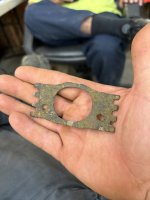Kimbrough
Jr. Member
I am not saying that any of these marks or signs has anything to do with treasure but perhaps the trees are treasures themselves. It is an interesting topic and my provide useful perspective here:
http://www.witnesstrees.org/home.html
http://www.witnesstrees.org/home.html




